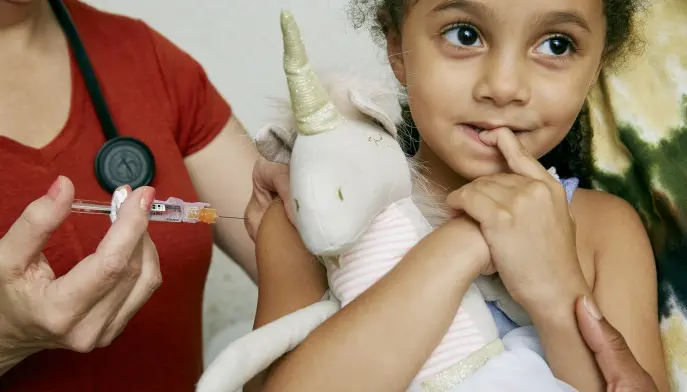Contents
Table of contents
Overview
Countries with at least one meningococcal vaccination universally available to certain age groups in their national immunisation programme
Analysis of multiple sources by Meningitis Research Foundation, July 2025
193 out of 194
Countries have a vaccine that protects against Hib meningitis universally available to all children in their national immunisation programme.
IVAC, Johns Hopkins Bloomberg School of Public Health, August 2025
166 out of 194
Countries have a vaccine that protects against pneumococcal meningitis universally available to all children in their national immunisation programme
IVAC, Johns Hopkins Bloomberg School of Public Health, August 2025
How many children receive vaccines that protect them against Haemophilus influenzae and pneumococcal meningitis?
Global coverage remains a challenge
Vaccine coverage in this chart refers to the estimated proportion of children aged under 12 years old, throughout the world, who have received all three doses of Haemophilus influenzae type b (Hib)-containing vaccines and pneumococcal conjugate vaccines (PCV).
The Immunisation Agenda 2030 (IA2030) is a global strategy that aims to maximise the life-saving impact of vaccines. A key target of IA2030 includes achieving 90% vaccine coverage for Hib and PCV.
Individual country scorecards published by IA2030 can be used to see how well your country is doing in meeting these global vaccination goals.
Where around the world have meningococcal vaccines been introduced?
Some countries have no meningococcal vaccines in their schedule
The most common cause of bacterial meningitis – meningococcal – is made up of several different types. The six main causes of meningitis are types A, B, C, W, X and Y.
The risk of getting meningococcal meningitis changes according to where you live, as certain types are more common in different parts of the world.
This interactive map shows which vaccines are available in different countries and WHO regions, and which type of meningococcal meningitis they protect against. It also shows the age range these vaccines are given at. Hover on a country for more information, then click to view official vaccination schedules if indicated. The map shows national government funded vaccination programmes only.
There is no universal recommendation from the WHO for meningococcal vaccines. Your Ministry of Health decides which vaccines to provide based on local data about how widespread a meningococcal type is, and the age groups most likely to be affected by it.
What’s the introduction rate of MenA and Men5CV vaccines in the African Meningitis Belt?
Access to vaccines is critical in a region at high risk of devastating meningitis epidemics
The 26 countries within the African Meningitis Belt– a string of countries running from Senegal and The Gambia in the west to Ethiopia in the east –have faced the ongoing risk of devastating outbreaks and epidemics.
However, in 2010 the introduction of MenAfriVac® (also known as MenA) helped to virtually eliminate type A meningitis in the region.
In 2023 MenFive® (or Men5CV) – the first vaccine to protect against the five main causes of meningococcal meningitis in the Meningitis Belt (A, C, W, Y, X) – became available. The WHO recommends that all countries within the Meningitis Belt introduce routine vaccination with Men5CV in children aged between nine and 18 months old.
Citing our work
We welcome you using our data to advocate for and raise awareness of meningitis. However, when citing this information please include references to underlying data sources, as this important work relies on many different people and organisations.
Meningitis Research Foundation (MRF). (2024). Meningitis Progress Tracker | Meningitis Research Foundation.
www.meningitis.org. https://www.meningitis.org/mpt
Want to support our work?
Your donation for meningitis research drives vital advancements in prevention, treatment, and public health education, saving lives and fostering hope for a future free from this devastating disease. Join us in the fight against meningitis today to make a tangible difference in the lives of individuals and communities worldwide.









